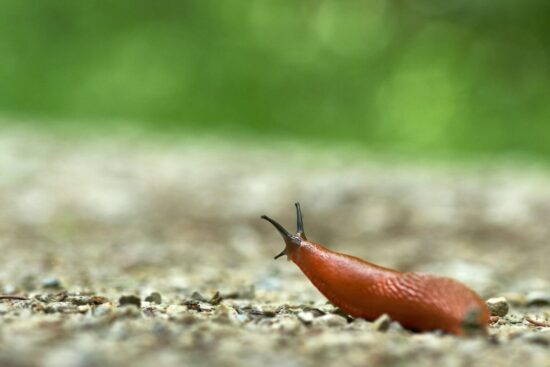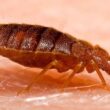Have you ever heard someone say that slugs have four noses? It sounds pretty weird when you think about it. After all, most animals have just one nose, so why would a slimy slug need four of them?
This claim has been floating around for years. You might have seen it on a Snapple bottle cap, heard it from a friend, or read it online. But here’s the thing: it’s not exactly true. The real answer to how many noses a slug has is way more interesting than you might expect.
Let’s dig into the fascinating world of slug anatomy and find out what’s really going on with these garden creatures.
What Are Slugs Anyway?
Before we talk about slug noses, let’s get to know these slimy little animals better. Slugs belong to a big group of animals called mollusks. This same group includes snails, clams, oysters, and even octopuses. Pretty cool, right?
Slugs are basically snails that lost their shells over millions of years of evolution. Think of them as snails that decided to go naked. This might seem like a bad idea since shells provide protection, but slugs found other ways to survive.
You can find slugs all over the world, and there are about 40 different species just in the UK alone. They love moist places like gardens, forests, and anywhere with plenty of dampness. That’s why you often see them after it rains or early in the morning when the dew is still on the grass.
Most slugs eat plants, but some are carnivores that hunt other slugs and snails. They’re actually pretty important for nature because they help break down dead plant material and recycle nutrients back into the soil.
The Four Noses Myth: Where Did This Idea Come From?
So where did this “four noses” story start? The claim became popular through sources like Snapple “Real Facts,” but experts say it’s misleading. The problem is that people looked at slug tentacles and thought, “Hey, those look like they could be noses!”
It’s easy to see why this confusion happened. Slugs do have four tentacle-like things sticking out of their heads, and they do use them to smell. But calling them “noses” is like calling your fingers “mini arms.” They’re related, but they work very differently.
Scientists who study mollusks (called malacologists) have been trying to set the record straight for years. The truth is much more fascinating than the simple “four noses” explanation.
Slug Anatomy: What Those Tentacles Really Do
Let’s take a closer look at what slugs actually have on their heads. Slugs have two pairs of tentacles, and each pair has a different job.
The Upper Tentacles: Eyes and Smell Combined
The upper pair of tentacles are called optical tentacles, and they’re the eyes of a slug. At the tip of each one, there’s a small black spot that can detect light and darkness. These aren’t fancy eyes like yours, but they help the slug figure out if it’s day or night and whether something big is casting a shadow over them.
But here’s where it gets interesting: these eye-stalks are also used for smell. So the same tentacle that helps a slug see also helps it smell. It’s like having a nose and an eye smooshed together into one body part.
If a slug loses one of these tentacles (maybe a bird grabbed it), it can actually grow back. Pretty amazing, right?
The Lower Tentacles: Touch and Taste
The lower pair of tentacles are smaller and are used for feeling and tasting. Think of them like super-sensitive fingers that can also taste whatever they touch. When a slug is moving around, these tentacles are constantly checking out the ground, feeling for food, and “tasting” the chemical signals in the environment.
These lower tentacles are incredibly sensitive. They can detect tiny amounts of chemicals that tell the slug important information about its surroundings.
The Scientific Truth: Do Slugs Actually Have Noses?
Here’s the big reveal: slugs don’t have noses at all in the traditional sense. What they have is something much cooler.
Instead of a nose like mammals have, slugs use their tentacles for chemoreception, which means detecting chemicals in their environment. This is similar to smelling, but it works differently than your nose.
When you smell a pizza, odor molecules float through the air and into your nose, where special cells detect them and send signals to your brain. For slugs, chemical molecules bind to special receptors on their tentacles, and this information gets sent to their brain (called the procerebrum).
So while we might say slugs “smell” with their tentacles, it’s not the same as having a nose. It’s more like they taste the air and ground around them.
How Slug Senses Actually Work
Slugs have developed an amazing sensory system that helps them survive without a protective shell. Let’s break down how it works.
Chemical Detection: Better Than You Might Think
Slugs can detect beer from 90 to 180 meters away. That’s almost two football fields! This incredible ability to detect chemicals from far away helps them find food, avoid danger, and locate mates.
Both pairs of tentacles send smell information to the slug’s brain, where learning and memory happen. This means slugs can actually remember good and bad smells and learn from their experiences.
Multiple Senses Working Together
What makes slug senses really special is how they combine different types of information. Research shows that either pair of tentacles alone is enough for a slug to learn and remember smells. This backup system means that if a slug loses one pair of tentacles, it can still navigate and find food with the other pair.
The slug’s brain combines chemical information from both tentacle pairs with touch sensations and basic light detection to create a complete picture of the environment.
Why This System Works So Well
Unlike humans, who rely heavily on sight and hearing, slugs live in a world dominated by chemical signals. Their tentacles can track odors using the wind and follow chemical trails to food sources. This chemical-based navigation system works great in the dark, moist environments where slugs thrive.
What Slugs Use Their Senses For
Now that we understand how slug senses work, let’s look at what they actually do with these abilities.
Finding Food
Slugs are like living chemical detectors when it comes to finding food. They can sense the chemicals released by plants, fungi, and decomposing organic matter from surprising distances. Different slug species prefer different foods, and their tentacles help them identify exactly what they’re looking for.
When a slug detects something tasty, it follows the chemical gradient (kind of like following a scent trail) until it reaches the source. This is why you might find slugs munching on your garden plants after a rain when chemical scents travel better through the air.
Avoiding Danger
Slugs use their tentacles to detect predators and quickly contract their bodies to become smaller targets. They can sense vibrations through their tentacles and detect chemical signals that might indicate a threat nearby.
Finding Mates
Slugs are hermaphrodites, which means each individual has both male and female reproductive parts. But they still need to find other slugs to mate with. Male slugs use their tentacles to detect female pheromones and locate potential mates through chemical signaling.
Staying Moist
Since slugs don’t have shells to protect them from drying out, they need to stay in moist environments. Their tentacles can detect humidity levels and guide them to damp areas that are essential for survival.
Different Types of Slugs Have Different Abilities
Not all slugs are exactly the same. The anatomy and sensory capabilities of slugs can vary depending on the species. Some species that live in very moist, dark places might have longer tentacles to help them navigate through dense vegetation. Others that have more specialized diets might have tentacles that are particularly good at detecting certain types of chemical signals.
Scientists have found that the diverse tentacle structures play crucial roles in directional chemical sensing and are much more specialized than tentacles in other types of gastropods.
What Science Tells Us About Slug Senses
Researchers have been studying slug senses for decades, and they’ve made some fascinating discoveries.
Memory and Learning
Slugs can form memories about smells and remember which odors are associated with good or bad experiences. Even more interesting, research shows that slugs need to use the same tentacles that formed a memory in order to recall that memory later.
This suggests that slug tentacles aren’t just simple smell detectors. They’re actually part of the memory storage system itself.
Regeneration and Adaptation
There’s ongoing research about whether slugs can regrow damaged tentacles, though scientists are still debating the extent of this ability. What we do know is that slugs are remarkably adaptable and can adjust their behavior based on environmental changes.
Using Slug Science for Garden Management
Understanding how many noses a slug has (or doesn’t have) can actually help you deal with garden pests more effectively.
Why Beer Traps Work
Now you know why beer traps are so effective for slug control. Slugs can detect the scent of beer from incredibly long distances, and they’re attracted to the yeast and fermentation smells. When they investigate the source, they fall into the container.
Scent-Based Deterrents
Since slugs rely so heavily on chemical detection, you can use scents they dislike to keep them away from your plants. Slugs find certain scents unpleasant, such as garlic, ginger, and cinnamon. You can sprinkle these around your plants or create sprays using essential oils.
Copper and Other Barriers
Copper barriers work partly because they create a chemical reaction that slugs can detect and avoid. Their sensitive tentacles pick up on the electrical charge created when their slime touches copper.
Common Myths About Slugs Busted
Let’s clear up some other common misunderstandings about slugs:
Myth: Slugs have four separate noses Truth: Slugs have four tentacles that work together as a complex sensory system, not four independent noses.
Myth: Slugs are blind Truth: Slugs have simple eyes on their upper tentacles that can detect light and darkness.
Myth: Only the lower tentacles can smell Truth: Both the upper and lower tentacles are used for chemical detection.
Myth: Slugs can’t learn Truth: Slugs can form memories and learn from experience, especially when it comes to food and danger.
Cool Slug Facts You Probably Didn’t Know
Here are some amazing things about slugs that might surprise you:
Slugs are incredible navigators. They can find their way back to the same hiding spot day after day using chemical trails and landmarks.
Some slugs can live for several years, which is pretty impressive for such small, vulnerable animals.
Slugs play important roles in ecosystems as decomposers, helping break down dead plant material and recycle nutrients.
The slime that slugs produce isn’t just for moving around. It also helps them stick to surfaces, provides protection from rough textures, and can even be used to escape from predators by making them too slippery to grab.
Why Slugs Matter
Even though many gardeners see slugs as pests, they’re actually important parts of healthy ecosystems. They help break down organic matter, provide food for birds and other animals, and contribute to soil health.
Understanding slug biology can help us find better ways to manage them in gardens without completely eliminating them from the environment. Sometimes it’s just a matter of encouraging them to live in parts of your yard where they won’t bother your prized plants.
The Bottom Line About Slug Noses
So, how many noses does a slug have? The answer is zero. Slugs don’t have noses at all. What they have is something much more sophisticated: a complex sensory system using four specialized tentacles that can detect chemicals, light, vibrations, and textures all at the same time.
This system is perfectly adapted for a slug’s lifestyle. Without a shell for protection, slugs needed to develop excellent senses to detect food, avoid predators, find mates, and navigate their environment. Their four tentacles working together provide all the sensory information they need to thrive.
The next time someone tells you that slugs have four noses, you can share the real story. It’s way more interesting than the simple myth, and it shows just how amazing these often-overlooked creatures really are.
The natural world is full of surprising adaptations and clever solutions to survival challenges. Slugs might be slimy garden visitors, but they’re also remarkable examples of how life finds ways to succeed in almost any environment. Understanding how they really work helps us appreciate the incredible diversity and ingenuity of nature, even in our own backyards.


